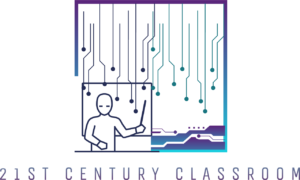In today’s rapidly evolving world, fostering a diverse and inclusive workplace has become essential for organizations seeking success. This rings particularly true for HR professionals in Sydney, where diverse demographics and cultural backgrounds enrich the city’s professional landscape. This blog post explores the significance of diversity and inclusion, delves into the challenges faced, and provides best practices for HR professionals to create a more inclusive work environment.
I. The Benefits of a Diverse and Inclusive Workplace:
A diverse and inclusive workplace brings numerous advantages that go beyond social responsibility. Firstly, it fosters innovation and creativity by incorporating a variety of perspectives, experiences, and ideas. When employees feel valued and empowered, they are more likely to contribute unique insights and collaborate effectively. Secondly, a diverse workforce enhances problem-solving abilities, as individuals with different backgrounds bring distinct approaches to challenges. Lastly, organizations that prioritize diversity and inclusion experience higher employee engagement, productivity, and retention rates. By cultivating a welcoming environment, businesses can attract top talent and reduce turnover, leading to long-term success.
II. Challenges and Barriers to Overcome:
While the benefits are clear, HR professionals face several challenges in building a diverse and inclusive workplace. One common obstacle is unconscious bias, which can unknowingly influence hiring decisions, performance evaluations, and opportunities for advancement. Lack of representation in leadership roles and ineffective policies are additional barriers that hinder progress. Acknowledging these challenges is crucial for developing effective strategies.
III. Best Practices for HR Professionals in Sydney:
To create a diverse and inclusive workplace, HR professionals can implement the following best practices:
A. Develop a Comprehensive Diversity and Inclusion Strategy:
Begin by setting clear goals and objectives for diversity and inclusion initiatives. Conduct an assessment of the current state of diversity within the organization, identifying areas for improvement. Create a well-defined plan that includes actionable steps and timelines to bridge existing gaps.
B. Foster Inclusive Recruitment and Hiring Practices:
Review job descriptions and qualifications to ensure they are inclusive and unbiased. Implement diverse sourcing strategies to attract a wider pool of candidates, such as reaching out to diverse professional networks and partnering with community organizations. Train hiring managers on unconscious bias and fair evaluation techniques to ensure unbiased decision-making.
C. Provide Diversity and Inclusion Training and Education:
Offer diversity and inclusion workshops for employees at all levels. Provide resources and training on cultural competence, promoting awareness and understanding of different backgrounds. Encourage ongoing learning by sharing best practices and highlighting success stories.
D. Establish Employee Resource Groups (ERGs) and Support Networks:
Encourage the formation of ERGs to support diverse employee communities. Allocate resources and provide support for ERGs to thrive, enabling them to organize events, share experiences, and influence company policies. Foster collaboration between ERGs and organizational leadership to ensure inclusivity remains a shared priority.
E. Review and Revise Policies and Procedures:
Regularly evaluate existing policies to ensure they are inclusive and equitable. Implement measures to address pay equity and promote equal opportunities for all employees. Consider employee feedback and make adjustments to policies to reflect evolving best practices and legal requirements.
F. Measure and Track Progress:
Establish key performance indicators (KPIs) to measure diversity and inclusion efforts. Monitor relevant data, such as workforce demographics and employee satisfaction surveys, to track progress. Use data-driven insights to inform future strategies and interventions, ensuring continuous improvement.
Takeaway
Creating a diverse and inclusive workplace is not only the right thing to do but also a strategic advantage for organizations in Sydney. HR professionals play a vital role in driving these initiatives and cultivating an inclusive culture. By implementing the best practices outlined above, HR professionals can create a workplace where all employees feel valued, respected, and empowered, leading to increased innovation, productivity, and long-term success. Embrace diversity and inclusion as core values, and watch your organization thrive in the vibrant and multicultural landscape of Sydney.

